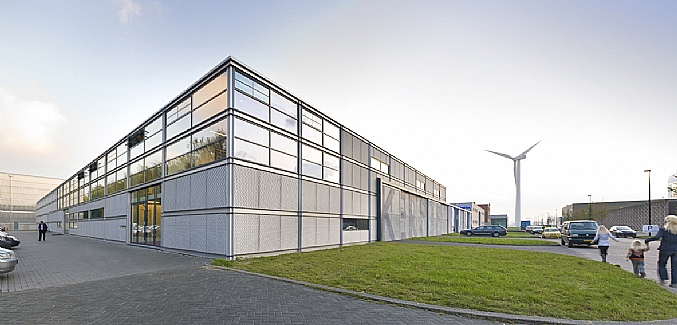
A better environment begins with steel

A better environment begins with steel

A better environment begins with steel

A better environment begins with steel

A better environment begins with steel

The Kersten Industrial Building, Amsterdam (Architects: LEVS).
A building is energy neutral if the energy it uses is generated sustainably. But how can we determine that? Firstly it is important to distinguish what the energy is used for.
Energy neutral: what exactly does it mean?
How can we determine whether a building is energy neutral? This depends on the definition of energy neutral and the source of the energy we use in the calculation. Strictly speaking a building is only energy neutral if all the energy purchased comes from green sources, i.e. all the energy the building uses has been generated sustainably. However it is better to construct buildings in an energy efficient manner, or even to make them produce clean energy.
Which energy?
There is a distinction between building-related energy, use-related energy and process-related energy.
Building-related energy is the energy for heating, cooling, lighting and ventilation of the building. The consumption of this energy is independent of the function and use of the building.
Use-related energy is the energy that is dependent on the use of the building. This includes computers, printers and laboratory equipment. The quantity of use-related energy consumed depends on the function of the building. The figure below shows the use-related energy for this particular office is 16%.

Example of energy consumption of an office (building-related energy and use-related energy).
Process-related energy is the energy required for the production processes in a building. Process-related energy use can be very substantial, particularly in industry. The proportion varies by industry, e.g. a paper mill might have a process-related energy use of 2936 kWh/m²/year and a building-related energy use of 386 kWh/m²/year. Designing an energy-neutral factory building, where process-related energy is included in the definition of energy-neutral construction is considerably more difficult than designing an energy-neutral factory building where only building-related energy is considered.
Which definition of energy neutral?
After determining which energy with renewable sources should be generated, the variables to be included in the calculation must be established.
Energy neutral – cost aspects
The financial proceeds of the locally generated power delivered to the grid are equivalent to the cost of purchasing energy. As the price of energy varies with time, the building will not continue to meet this over the longer term. In addition it is difficult to derive the amount of energy used from this, because other costs are included in energy prices in addition to the actual quantity of energy, e.g. transport costs.
Energy neutral – emission aspects
The building produces sufficient renewable energy to compensate for the emissions from external sources. A building that obtains all its power from nuclear or hydroelectric sources is energy neutral according to this definition. The definition includes green power, but this can also mask that the design is not so good from an energy perspective.
Energy neutral – quantity aspects
In this respect the energy that is generated at the building location is equivalent to the energy that the building uses. This amount of energy generated at any given time is rarely the same as the amount of energy required. For example, if the wind blows strongly at night a wind turbine can generate a considerable amount of energy. At that time the energy requirements of buildings may be minimal. In that case a storage medium is desirable. The grid is often used for this. At night the building supplies to the grid and the same amount of energy is consumed later. A connection to the grid limits the capacity of the power generation installations needed.

The connection of a building to the mains electricity supply reduces the demand on energy-generating installations.